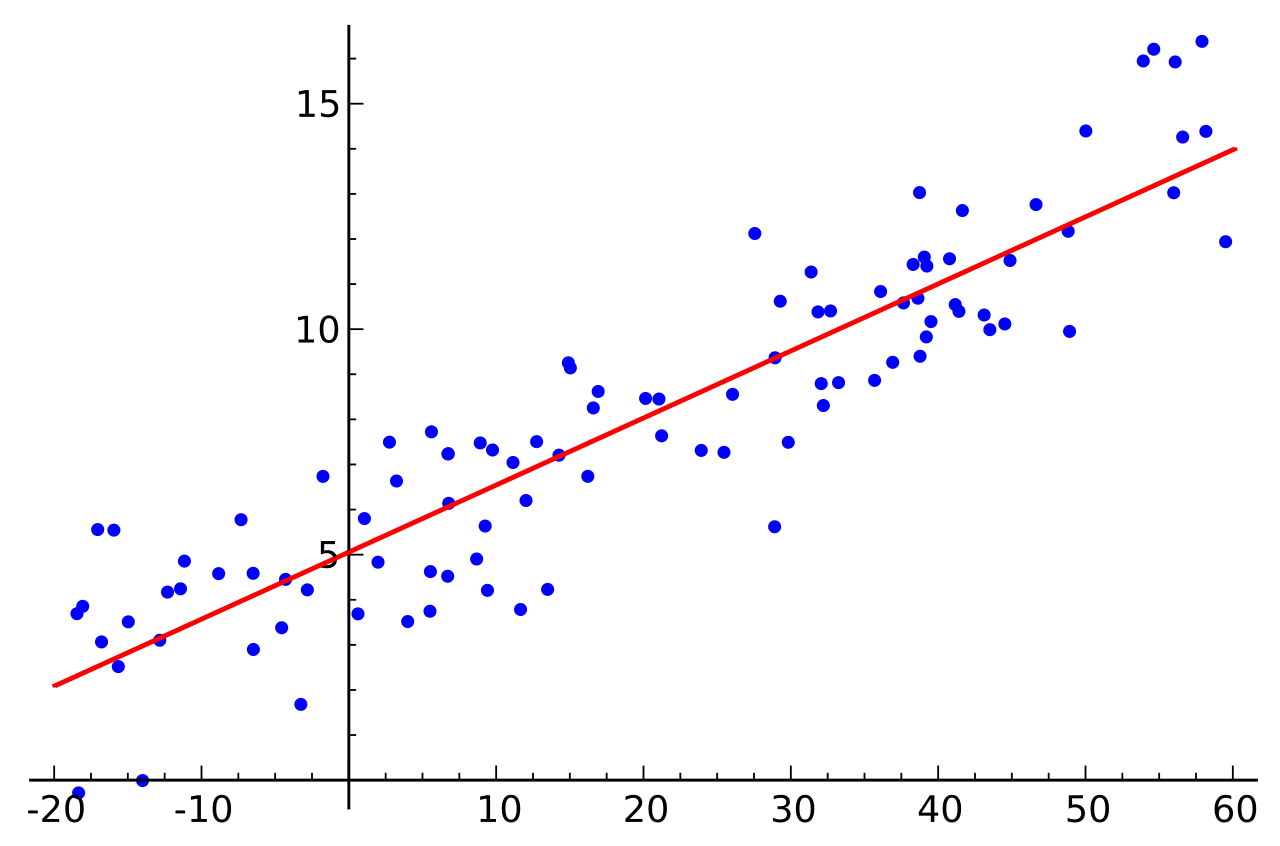a. Calculate the Mean of X:
X‾=∑(X×f)∑f
Calculate
∑(X×f):
∑(X×f)=(2×4)+(3×6)+(4×5)+(5×7)+(6×3)=8+18+20+35+18=99
Calculate ∑f :
∑f=4+6+5+7+3=25
X‾=99 / 25=3.9
Calculate the Mean of Y:
Y‾=∑(Y×f)∑f }
Calculate
∑(Y×f):
∑(Y×f)=(3×4)+(5×6)+(6×5)+(7×7)+(8×3)=12+30+30+49+24=145
Y‾=14525=5.8
Step 2:Calculate the Product of X and Y with Frequency
Calculate
X×Y×f :
| X | Y | f |
X×Y×f |
|---|---|---|---|
| 2 | 3 | 4 | 2 × 3 × 4 = 24 |
| 3 | 5 | 6 | 3 × 5 × 6 = 90 |
| 4 | 6 | 5 | 4 × 6 × 5 = 120 |
| 5 | 7 | 7 | 5 × 7 × 7 = 245 |
| 6 | 8 | 3 | 6 × 8 × 3 = 144 |
Step 3: Calculate the Sum of X×Y×f
∑(X×Y×f)=24+90+120+245+144=623
Step 4: Calculate the Sum of Frequencies (n)
n=∑f=25
Step 5: Calculate the Sum of Squares for X and Y
a. Calculate
X2×f :
| X | f |
X2×f |
|---|---|---|
| 2 | 4 | 4 × 2² = 16 |
| 3 | 6 | 6 × 3² = 54 |
| 4 | 5 | 5 × 4² = 80 |
| 5 | 7 | 7 × 5² = 175 |
| 6 | 3 | 3 × 6² = 108 |
b. Calculate
Y2×f :
| Y | f |
Y2×f |
|---|---|---|
| 3 | 4 | 4 × 3² = 36 |
| 5 | 6 | 6 × 5² = 150 |
| 6 | 5 | 5 × 6² = 180 |
| 7 | 7 | 7 × 7² = 343 |
| 8 | 3 | 3 × 8² = 192 |
Sum of X2×f:
∑(X2×f)=16+54+80+175+108=433
Sum of Y2×f:
∑(Y2×f)=36+150+180+343+192=901
Step 6: Calculate Pearson’s Correlation Coefficient (r)
Use the formula:

Substitute values:
- Calculate ∑X and ∑Y
∑X=(2×4)+(3×6)+(4×5)+(5×7)+(6×3)=8+18+20+35+18=99
∑Y=(3×4)+(5×6)+(6×5)+(7×7)+(8×3)=12+30+30+49+24=145


Conclusion
The Pearson’s Correlation Coefficient r for the given bivariate frequency distribution is approximately 0.977, indicating a very strong positive linear correlation between X and Y.




























